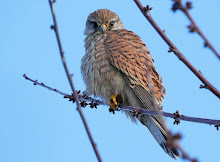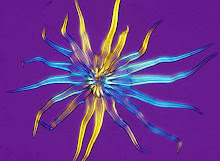Seen on my walk into town this morning - an exquisite
rain-glossed rosette of fresh, spoon-shaped succulent leaves of Danish
scurvy-grass Cochlearia danica, growing in the grime that accumulated
between a wall and the pavement.
It’s a seaside native wild flower that thrives in salt spray
on clifftops and sea walls along the north east coast; here, an hour’s drive
inland, it’s doused in saline mist that hangs in the slipstream of traffic,
along roads treated with de-icing salt in winter.
When we first moved to the north east, 50 years ago, it was
confined to the coast but since then Danish scurvy-grass has followed
salt-spreading council vehicles inland, all the way into the North Pennines. In
another month a ribbon of its tiny white flowers will decorate road verges
along most of our major roads, followed by a prolific crop of tiny seeds that
will be carried away on car tyres.
Cochlearia danica is member of the cabbage family.
Scurvy-grass leaves have a high vitamin C content and have been used as a fresh
green vegetable and to ward off scurvy, but were described by C. Pierpoint
Johnson in his Useful Plants of Great Britain: a Treatise, published in
1863, as ‘scarcely superior to water-cress in medicinal effect and much
less palatable’ although ‘well known to the early navigators as a
remedy for the terrible disease that formerly decimated our ships’ crews on
long voyages and was brought much into the notice at a somewhat later period by
the use to which it, with other like herbs, was applied by Captain Cook in his
expeditions to the Southern Seas.’
Scurvy-grass flowering on Craster harbour wall, on the
Northumberland coast, in spring.

























No comments:
Post a Comment
Note: Only a member of this blog may post a comment.